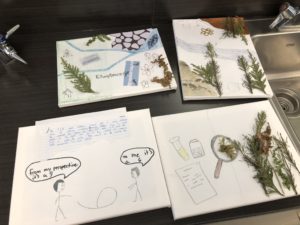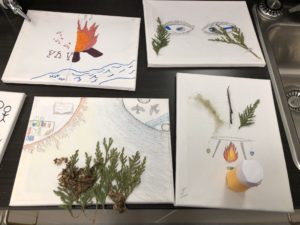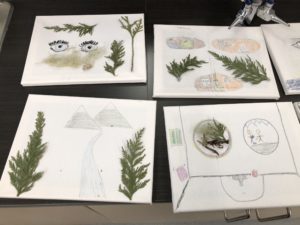Standard 9
Educators respect and value the history of First Nations, Inuit and Métis in Canada and the impact of the past on present and the future. Educators contribute towards truth, reconciliation and healing. Educators foster a deeper understanding of ways of knowing and being, histories, and cultures of First Nations, Inuit and Métis.
Over the course of this semester, and especially in my 490 practicum, I feel like I have finally started to figure out ways to embed Indigenous ways of knowing into the classroom. I have taken it upon myself to have a well-developed and well thought out FPPL section in each lesson plan, as well as an overarching FPPL unit goal, especially focusing on connectedness and relationships to oneself, family, community and the natural world. One example of this growth was in my (practicum 490) Life Science 11 class at Shas Ti Kelly Road. Using FNESC resources and recommendations, I taught a small lesson on Traditional Ecological Knowledge and Western Science working together, or “Etuaptmumk” (Mi’kmaw), or “Two-Eyed Seeing”. Following this lesson, learners were asked to develop a visual representation of this concept (featured below). Later, on their unit test, they were given the choice to write about Etuaptmumk, and many wrote beautiful, insightful reflections about the strength of two perspectives, and how Indigenous knowledge can bring more understanding to Science.
Two-Eyed Seeing is
“learning to see from one eye with the strengths of Indigenous knowledges and ways of knowing, and from the other eye with the strengths of mainstream knowledges and ways of knowing, and to use both these eyes together, for the benefit of all.”
~Elder Dr. Albert Marshall





Although this lesson demonstrates efforts towards TRC Call to Action 63 “Education for Reconciliation”, and encourages intercultural understanding, empathy, and mutual respect, I know I still have a long way to go as an educator. In my future classrooms, I would like the learning to be less standalone, and to instead be truly integrated into every lesson. When COVID is over, more experiential, hands-on, collaborative, community-oriented learning will be even more exciting, and hopefully welcomed by learners. I would also like to invite elders and knowledge holders into the classroom, and have more discussions about Truth and Reconciliation.
One of the biggest takeaways from my learning in Standard 9 is to show up…just…SHOW. UP. Go to the Indigenous Pro-D days, do research on your own time, have those uncomfortable conversations, recognize your own biases, ask questions, and (hopefully) your learners will follow suit.